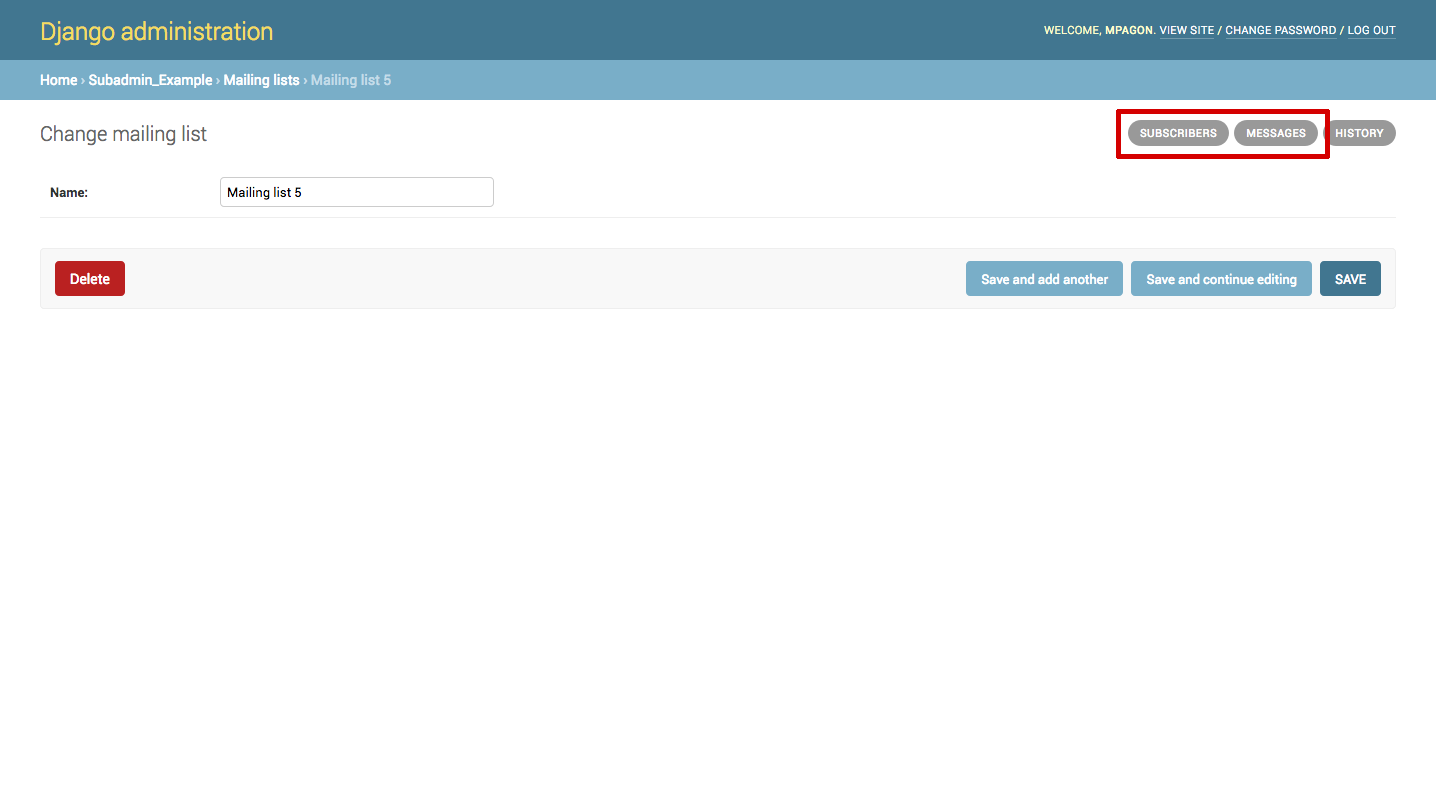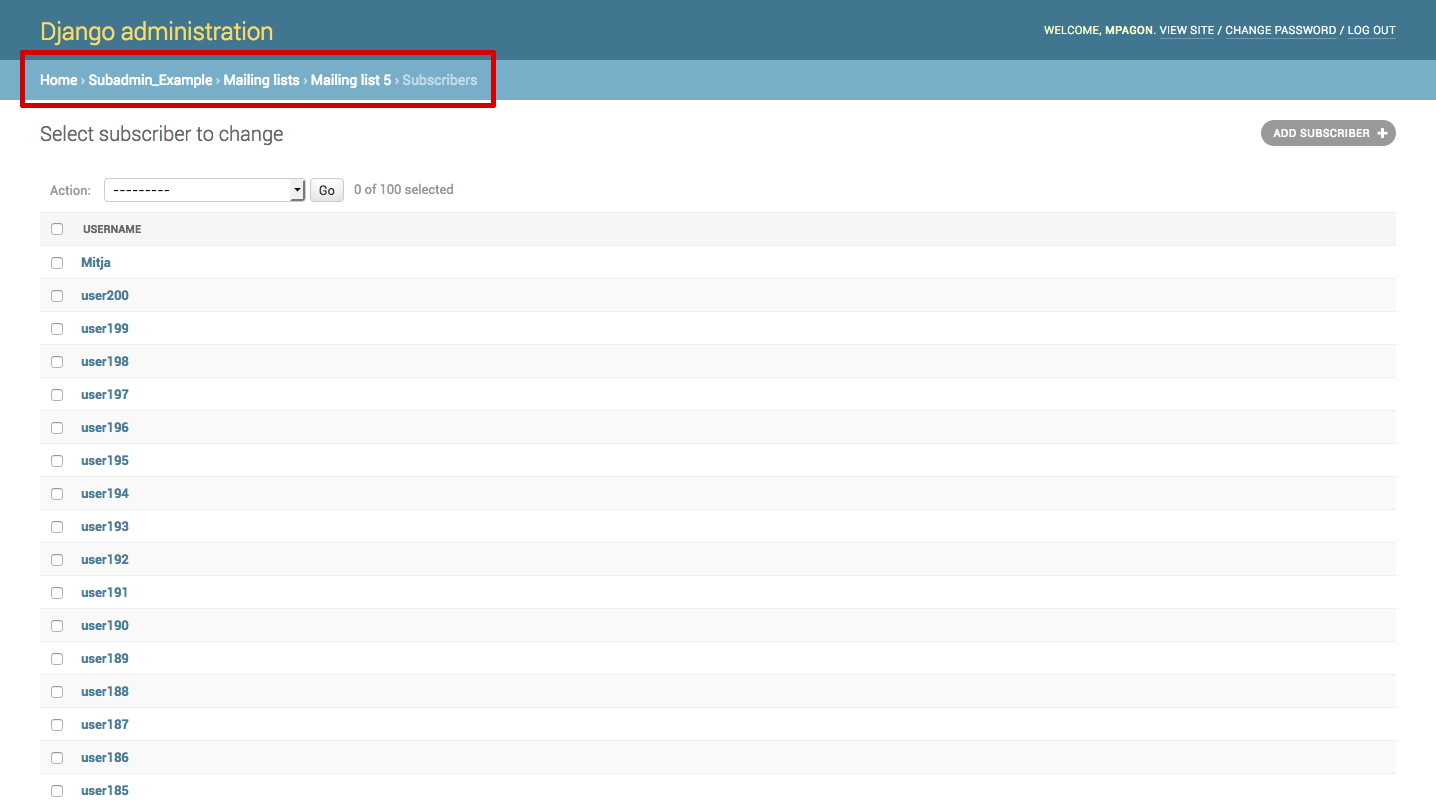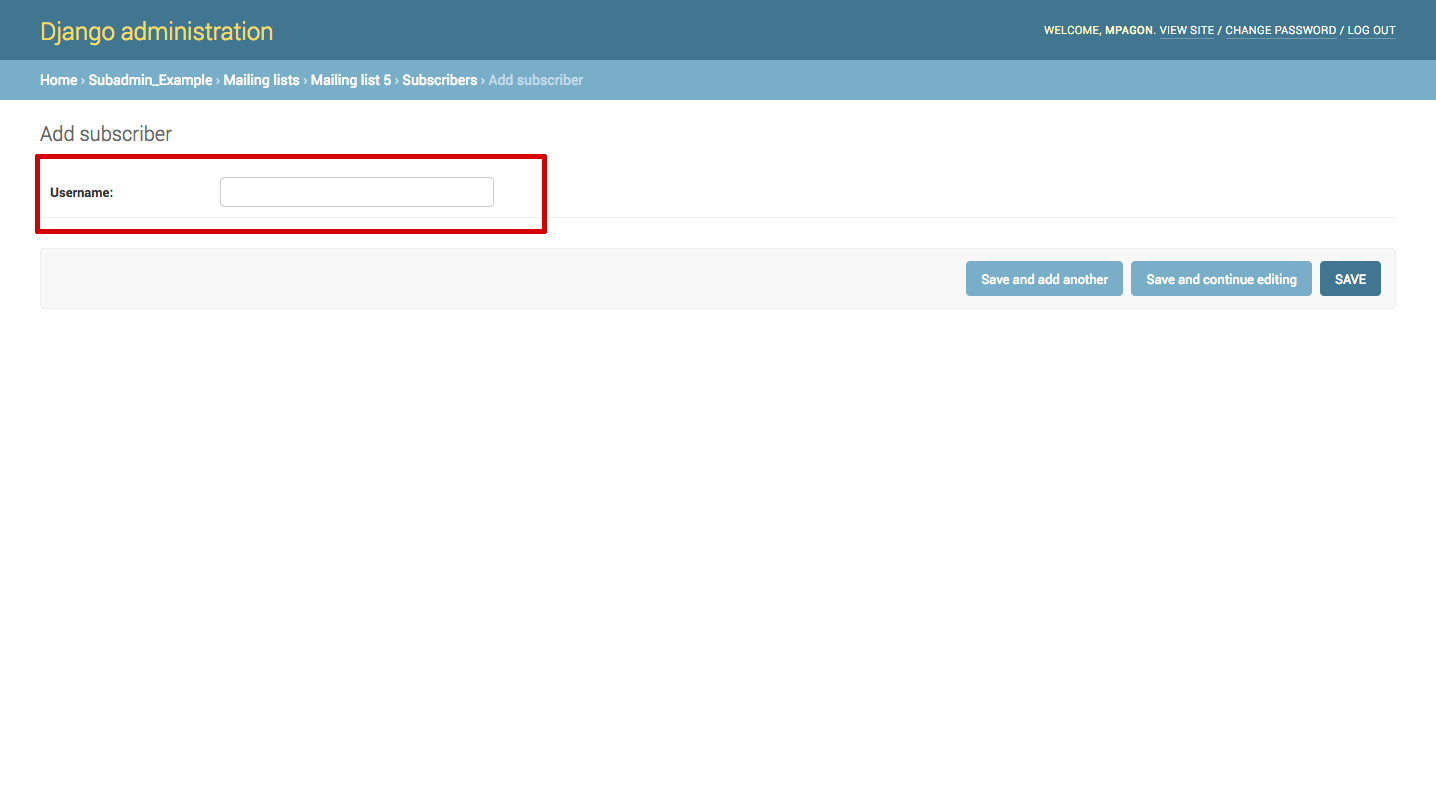A special kind of ModelAdmin that allows it to be nested within another ModelAdmin
Project description
django-subadmin
django-subadmin provides a special kind of ModelAdmin, called SubAdmin, that allows it to be nested within another ModelAdmin instance. Similar to django's built-in InlineModelAdmin, it allows editing of related objects, but instead of doing it inline, it gives you a full ModelAdmin as sub-admin of parent ModelAdmin. Like InlineModelAdmin it works on models related by ForeignKey. Multiple SubAdmin instances can be nested within a single ModelAdmin or SubAdmin allowing for multi-level nesting.
Suported Python and Django releases
Current release of django-subadmin is 2.0.0 and it supports Python 3 only and Django versions 2.0 and up (including Django 3.0).
There is also a legacy 1.9.3 release with support for Python 2.7 and Django versions 1.9, 1.10 and 1.11. This release is no longer maintained and supported, but it's made available for legacy applications.
Verison numbering
django-subadmin versions follow Django version numbers. django-subadmin major and minor version numbers equal the minimal compatible django release.
Installation
The easiest and recommended way to install django-subadmin is from PyPI
pip install django-subadmin
You need to add subadmin to INSTALLED_APPS in your projects settings.py, otherwise django will not be able to find the necessary templates and template tags.
# settings.py
INSTALLED_APPS = (
...
'subadmin',
...
)
Example Usage
Sometimes things are best explained by an example. Let's say you have two related models.
# models.py
class MailingList(models.Model):
name = models.CharField(max_length=100)
class Subscriber(models.Model):
mailing_list = models.ForeignKey(MailingList)
username = models.CharField(max_length=100)
If you wish to display only subscribers belonging to a particular mailing list in django admin, your only options is to use InlineModelAdmin, which is not very practical when dealing with large number of related objects, plus, you loose all the cool functionality of ModelAdmin like searching, filtering, pagination, etc ...
This is where SubAdmin comes in.
# admin.py
from subadmin import SubAdmin, RootSubAdmin
from .models import MailingList, Subscriber
# Instead of admin.ModelAdmin we subclass SubAdmin,
# we also set model attribute
class SubscriberSubAdmin(SubAdmin):
model = Subscriber
list_display = ('username',)
# Since this is the top level model admin, which will be registred with admin.site,
# we subclass RootSubAdmin and set subadmins attribute
class MailingListAdmin(RootSubAdmin):
list_display = ('name',)
subadmins = [SubscriberSubAdmin]
admin.site.register(MailingList, MailingListAdmin)
With just a few lines of code you get a fully functional ModelAdmin, that will automatically pull in just the relevant related objects, based on ForeignKey relation between the two models, it will also auto set ForeignKey fields for nested relations and exclude them from change form when adding and editing objects on subadmin.
Screenshots
SubAdmin instances are accesible from edit view of the ModelAdmin instance they are nested in. In the screenshot above you can see links to Subscribers and Messages subadmins (marked with red rectangle) for MailingList instance Mailing list 5.
SubAdmin looks and behaves just like a regular ModelAdmin, but looking at breadcrumbs (marked with red rectangle), you can see it is nested within another ModelAdmin. Displayed Subscribers are limited to those related to MailingList instance Mailing list 5.
When adding or editing objects with SubAdmin, ForeignKey fields to parent instances are removed from the form and automatically set when saving. In this example mailing_list field is removed and value is set to parent MailingList instance Mailing list 5.
If you want to see it in action, or get a more in-depth look at how to set everything up, check out https://github.com/inueni/django-subadmin-example.
Stability
django-subadmin has evolved from code that has been running on production servers since early 2014 without any issues. The code is provided as-is and the developers bear no responsibility for any issues stemming from it's use.
Project details
Release history Release notifications | RSS feed
Download files
Download the file for your platform. If you're not sure which to choose, learn more about installing packages.
Source Distribution
Built Distribution
Hashes for django_subadmin-2.0.0-py3-none-any.whl
| Algorithm | Hash digest | |
|---|---|---|
| SHA256 | 39e03def06bce929325011d4d934c868789985ebe74a88f1e3ddf7852504deba |
|
| MD5 | 5531fbe80eb2ac58d4dd4ab577129e8c |
|
| BLAKE2b-256 | a7284e1b0888a706cf4d7d5471107ab9232d4fe39b663cf676011570e8557540 |














